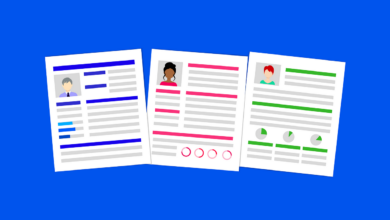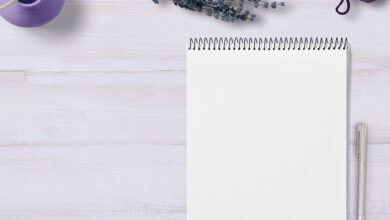Resume and How to Create It

Resume and How to Create It
What is a Resume?
In order to list their qualifications for a position, job applicants must generate a formal document called a resume. A personalized cover letter that is sent with a resume often conveys interest in a particular position or business and attracts attention to the resume’s most crucial details.
There is no huge difference between a CV and a Resume. The slight difference is that the Latin word curriculum vitae (CV) means “course of life.” Resumé, on the other hand, is French for “summary.” Both are commonly written for the particular job you’re seeking for, intended to position you as the most qualified applicant, used to secure you an interview with the recruiter, and do not always contain personal interests.
According to American career counselors, a resume should not exceed one or two pages. Employers in Britain typically need a CV (curriculum vitae), which is a somewhat more in-depth document.
Nowadays, resumes are frequently emailed or uploaded online as part of an application. The standard resume length of one to two pages still holds true, but there is nothing prohibiting you from including a little video introduction or another graphic if it is appropriate and enhances your presentation.
It makes sense to change your Resume to make it relevant to the specific job you’re looking for.
There are several resume forms and numerous versions for different occupations including investment banking and the fashion industry. It is highly important for your resume to be brief and have a tidy layout as those who must sort it through hundreds of resumes and are known to have short attention spans.
Regardless of style, the majority of resumes should contain a brief overview of abilities and experience, a list of prior employment in bullet form in reverse chronological order, and a list of degrees attained. A summary section should be included to show special abilities, such as proficiency in a second language, familiarity with computer languages, work-related interests, connections with organizations, and any awards received. Successful resumes also show the precise successes candidates have made in previous roles, like cost-cutting, exceeding sales targets, boosting revenues, and strengthening teams.
Resume Format Tips
To create your personal resume, follow these easy resume format tips:
- Along with your name, email address, and cell phone number, the header on your resume should also include your URL for your website or blog, if you have one, as well as your address on LinkedIn or another professional network.
- In the resume profile, you should briefly state your skills and accomplishments as it serves as your resume bio. Add also your work experiences, job titles, the companies you have worked under and the duration.
- Next, you add your educational qualifications and relevant coursework.
- Following this would be your skills; soft skills and hard skills that fit into the job description
- Note that when creating your resume, you should set a one-inch margin on each side of the page, use single or 1.15 line spacing, legible font and size, bullet points where necessary and on the whole, make your document easy to navigate through.
Standard Formats for a Resume
There are three standard formats for writing a resume. It is advisable that you choose the one that will present you as the best fit for the job.
Functional Resume: This format focuses on the applicant’s skills rather than the work experience. This is used by people who are freshly graduated and have gathered little or no work experience, or those that have gaps in their employment.
Reverse-Chronological Resume: This is the best-known classical resume format. This format is usually the best choice as recruiters are often conversant with this format. It helps you write out your work experience starting from the most recent experience into your past.
Combination Resume: This is a combination of the functional and chronological formats and presents a summary of the applicant’s skills, most relevant work experiences and skills.
Frequently Asked Questions
What is the Difference Between Resume and CV?
A resume is a document that highlights your skills, qualifications and achievements as it relates to the position you are applying for while a CV is a document showing all your academic qualifications and history.
Can I Use a Resume Instead of a CV?
The answer is absolutely yes. You can use your resume to apply for jobs instead of sending your CV as it is position specific.
Conclusion
Resume is a vital document for any job search and application. Ensure you create a resume that is tailored to the position you are applying for. This will increase your chances of getting hired.






